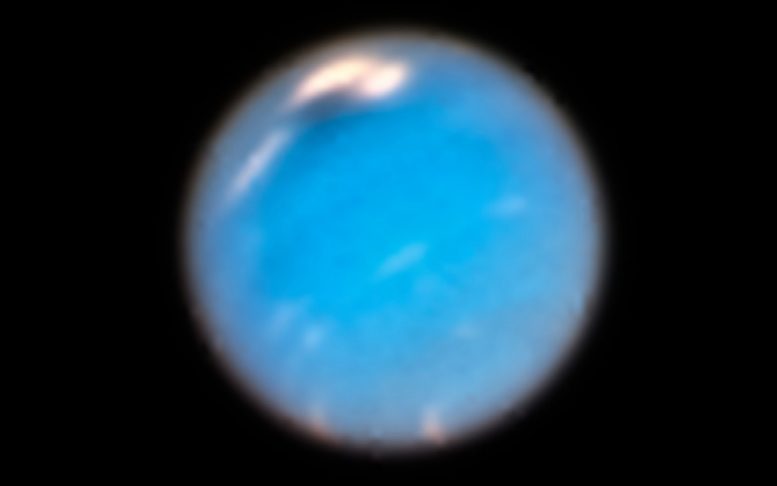
The observations of Neptune carried out in September and November 2018 show the first evidence of a huge storm brewing, with the discovery of a new northern Great Dark Spot (visible here to the upper left of the planet’s disc, partially overlapping a large patch of white). Credit: NASA, ESA, A.A. Simon (NASA Goddard), and M.H. Wong and A.I. Hsu (University of California, Berkeley)
Since Pluto’s demotion from a fully-fledged planet to a dwarf planet, Neptune holds the title of the outermost planet in the Solar System. This new image of the planet was made during Hubble’s Outer Planet Atmosphere Legacy (OPAL) program, under which it has observed the four outermost planets, including Neptune, on a yearly basis since 2014.
The observations of Neptune carried out in September and November 2018 show the first evidence of a huge storm brewing, with the discovery of a new northern Great Dark Spot (visible here to the upper left of the planet’s disc, partially overlapping a large patch of white). This new dark storm is of a similar size and shape to the storm discovered in 1989 by the Voyager 2 space probe.
While the future evolution of the storm will be tracked through the continued yearly Hubble observations and also by ground-based telescopes, older OPAL observations from Hubble show that its appearance was preceded by increased cloud activity throughout the region. There are hints of the storm forming in images from as early as 2015. This slow origin process indicates that the storm developed deep within Neptune’s atmosphere, pulling up dark material from its depths, and only became visible once the top of it reached higher altitudes.

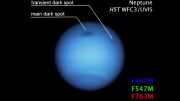
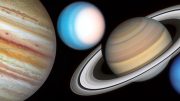

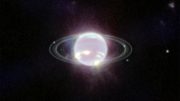
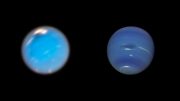
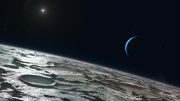
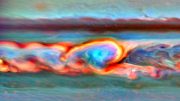
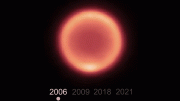
I have written before suggesting ideas for a space-based telescope system (net) capable of much greater flexibility positioning-wise and directional-wise. I’d say a minimum of 4 space sat-scopes with multiple capabilities from mirror to spectral with each sat being able to change its function to a focal purpose for direction repositioning.
.
may I suggest before you launch the JWST telescope that you be forward-looking and design/enable it to work as part of a network of space telescopes SO THAT focal distances could be up to hundreds of thousands of miles+ apart perhaps a given that Earth could be one point initially perhaps Hubble JWST and some future launch more advanved JWST-capapable telescopes to be able to triangulate or even quadrangulate at far greater distances then possible with Earth’s base systems like Arecibo and part of its Network.
By achieving such great focal and triangulation distances (ask to see my concept drawing) between each telescope I’m sure even more sensitive and subtle differences can be noted and perhaps star haloing and other methods can be detected buy one telescope versus another one and capitalized on much better.
I envision a network of Web-like telescopes in space great distances apart (one on the moon too perhaps) but the space telescopes would act both as the “eyepiece” or “objective” so to speak depending on the direction of the subject. variable distances between the “telescopic nodes” would be far more flexible than the earth-based networks that exist now. plus a great system if dark space illumination mirrors to direct sunlight into areas to detect NEOs or possible NEOs as well as illuminate objects anywhere in the solar system & beyond. potential intensity variation couls use magnified/reflected sunlight to illuminate wide areas of space or focus light to vaporize objects potentially hazardous to earth. let’s face it – the sun is our most powerful weapon against NEOs.
Anyways, i hope the Webb telescope will be the first of a series of this spaced-based telescopic network. can you imagine the details we will be able to see then?
I’m sure you can imagine my concept, but, I can provide a diagram of how it will look/work in space if you like. .